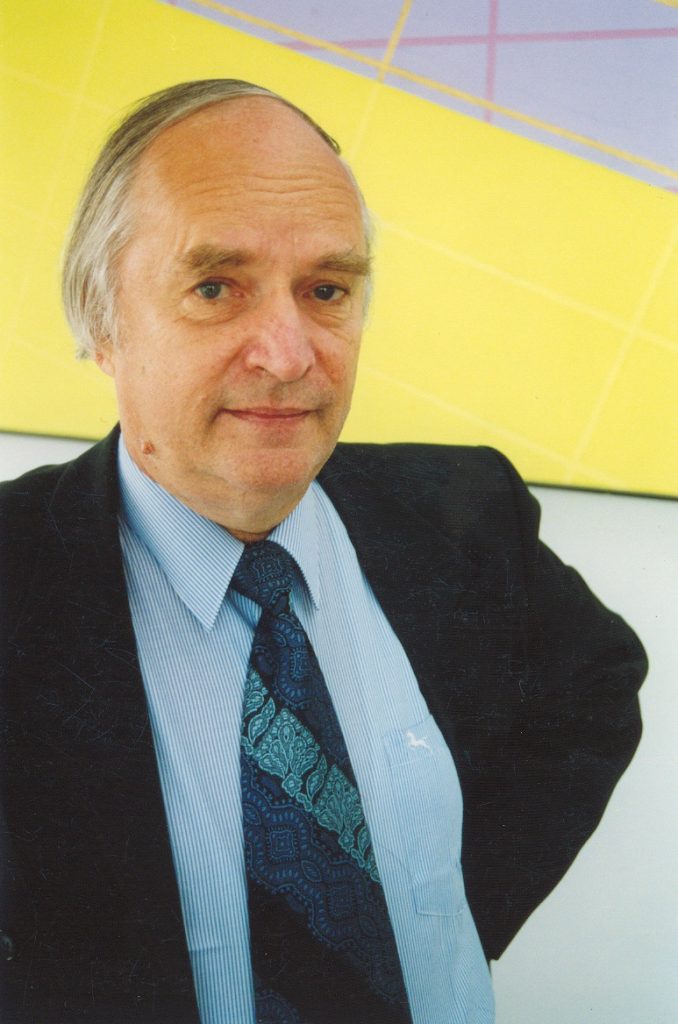15.10.1932—25.12.2020
Composer and teacher, ECU member since 1957
www.jaanraats.com
Estonian Music Information Center
In the 1960s, a markedly anti-Romantic, active and playful style was brought into Estonian music by Jaan Rääts, a composer of neo-classicist orientation. His youthful and rhythmic Concerto for Chamber Orchestra from 1961 became a landmark achievement in Estonian new music.
Rääts studied piano at the Tartu Music High School and graduated in 1957 as a composition student of professors Mart Saar and Heino Eller from the Tallinn Conservatoire. 1955–1966 he worked as a recording engineer at the Estonian Radio, 1966–1970 as chief editor of music programs and 1970–1974 as chief director and music manager of the Estonian Television. From 1974 to 1993, he served as chairman of the Estonian Composers’ Union and was also a long-time member of high party and government bodies. 1968–1970 and again 1974–2003, Rääts has taught composition at the Estonian Academy of Music (professor since 1990). Among his many students there were Raimo Kangro, Erkki-Sven Tüür, Rauno Remme, Tõnu Kõrvits, Tõnis Kaumann and Timo Steiner.
Jaan Rääts is a composer with a fairly constant sound and style. The bulk of his work consists of instrumental music. From 1957–1993, Rääts completed ten symphonies. He has also written 24 concertos for orchestra and soloist(s) and two concertos for chamber orchestra, symphonic pieces and a lot of chamber music.
In general, Rääts avoids dramaturgical development and storytelling. Vigorous rhythmic pulse is the basic element of his music, in which the various stylistic fragments revolve as if in a drum mixer: Mozartian triads and modernist clusters, baroque and folk music motifs, linear polyphony and pop music rhythms. His terse form is the glue that holds together his kaleidoscopic style and balances its rapid contrasts with the symmetries of the overall scheme. Sometimes, lyrical and neo-Romantic figures will flit by in his works but they do not define the general character of the works. Rääts’ playful style generally emanates subtle humour or (self-)irony. On the background of the national romantic main trend of 1950s Estonian music, the rhythmic energy and crisp free tonal melodic of Rääts’ works seemed extraordinary.
The pulsating rhythm and angular melodies of Rääts’ first symphonies (No. 1 1957, No. 2 1958/1987, No. 3 1959) seemed revolutionary at first, but his energetic style was actually fairly well suited to conveying the spirit of Soviet life and work ethic. In the music of the late 1960s and early 1970s, namely, in Symphonies No. 6 (1967) and No. 7 (1972), the “snapshot technique” in Rääts’ music assumed feverish forms. His material became diverse – a mosaic-like texture filled with many fleeting stylistic references, quotations and motifs from different musical styles including folk music. In the 1980s, a more aphoristic, minimalist-influenced style gained ground.
Rääts’ playful style proved especially well suited to the concerto – he has written concertos for violin (1963, 1979, 1995) and piano (1968, 1971, 1983, 1989, 1992 – for 4 hands), as well as for piano duo (1986), cello (1966, 1997), guitar (1992) and various other instrumental duos – for trumpet and piano (1993), violin and guitar (1998) and two guitars (1999). Rääts’ orchestral works also include two concertos for chamber orchestra (1961, 1987) and shorter orchestra works, including Intrata for chamber orchestra (1997) and Five Sketches for Requiem (“Viis eskiisi reekviemile”, 1997) as some of the most attractive ones.
Rääts’ chamber music is even more extensive. He has composed six string quartets and seven piano trios, piano quartets, sextets and works for other ensembles. His prolific work for the piano includes 10 sonatas and the cycles 24 Preludes (1968), 24 Preludes to Estonian Folk Melodies (“24 prelüüdi eesti rahvaviisidele”, 1977), 24 Estonian Preludes (“24 eesti prelüüdi”, 1989) and three miniature series entitled 24 Marginalia (“24 marginaali” – 1979 for piano, 1980 for electronics – the first electronic work to be put on LP in Estonia, and in 1982 for two pianos). Of Rääts’ few vocal works, the most notable are the oratorio Karl Marx (1964, Enn Vetemaa) for narrator, mixed choir and symphony orchestra, Small Oratorio(“Väike oratoorium”, 1973, Enn Vetemaa) for male choir, organ and symphony orchestra and Magic Square (“Maagiline ruut”, 1999) for chamber choir and chamber orchestra. Rääts has also written music for 14 Estonian films.
Rääts’ music has remained concerto-like and playful right up to the present day, irrespective of the genre. He says: “I don’t like rigid systems. I like absorbing musical material, filtering it, emotionally developing it as needed. Using it as a springboard for my imagination…”
Rääts’ rhythm-centred idiom, developed in the 1960s, was exerting an influence on Estonian music as a whole as late as in the end of the 1980s. Although he started as a composer during the era of (re)discovering modernism and avant-garde compositional techniques, his mosaic-like, playful personal style signified the advent of postmodernist thought in Estonian music.
More than 40 vinyl records and CD-s have been released by several companies including Melodija, Antes Edition, Finlandia Records, Capriccio Records, Kreuzberg Records and Eurodisc. By Antes Edition two personal collections (1995, 1996) have produced. Rääts’s works have been published by Sovetski Kompozitor, Muzõka, Estonian Music Foundation, Edition Peters, Sikorski Verlag, G. Schirmer Inc., Antes Edition, Edition 49, Eres Edition a.o.
Jaan Rääts has received the honorary titles of Estonian SSR Merited Art Worker (1965) and People’s Artist (1977). He has deserved the Prize of Soviet Estonia (1972), Literature and Art Award of the Estonian Soviet Communist Youth Organisation (1970) and Annual Music award of the ESSR (1974). In the Republic of Estonia he has been awarded the Estonian State Cultural Award (1995), the Annual Prize of Endowment for Music of Culture Endowment of Estonia (2002), the Annual Award of the Cultural Endowment of Estonia (2007), The Lifetime Achievement Award of the Estonian National Culture Foundation (2011), The Lifetime Achievement Award of the Republic of Estonia (2011) and the third class order of the White Star.
© EMIC 2007
